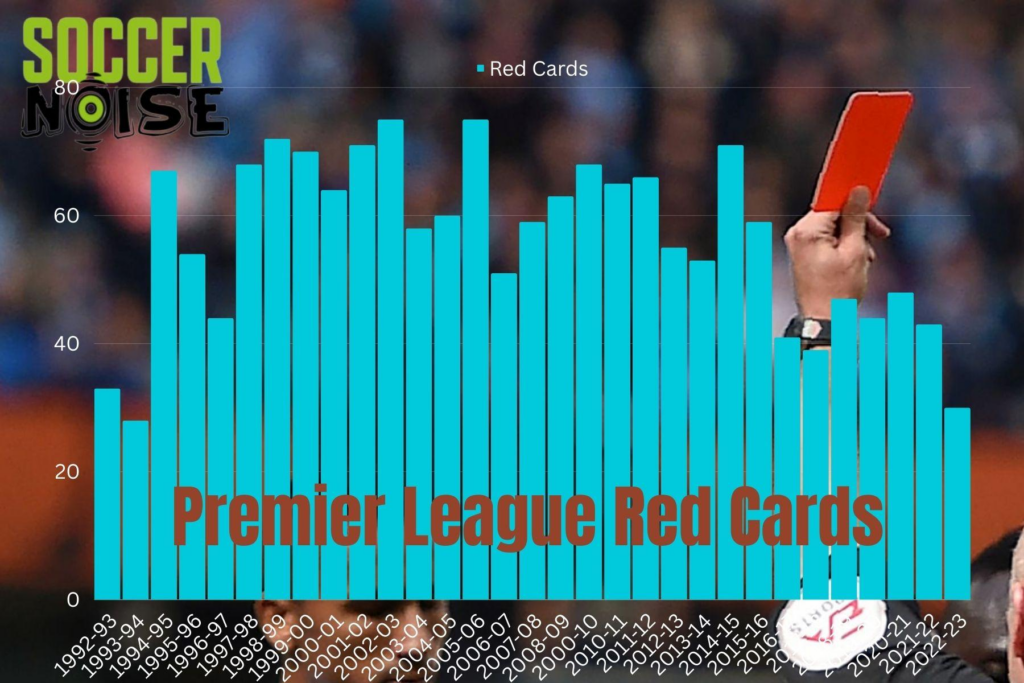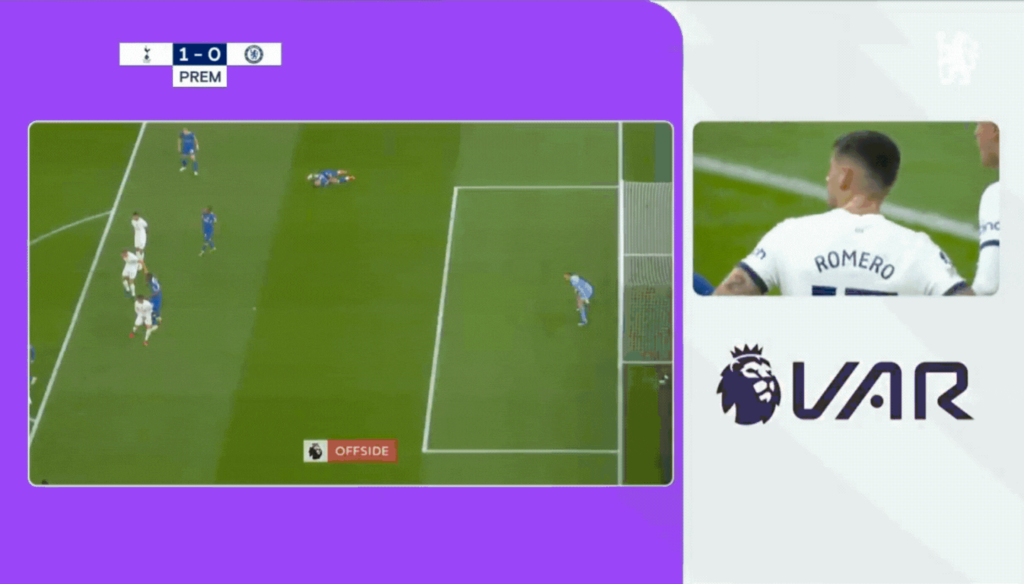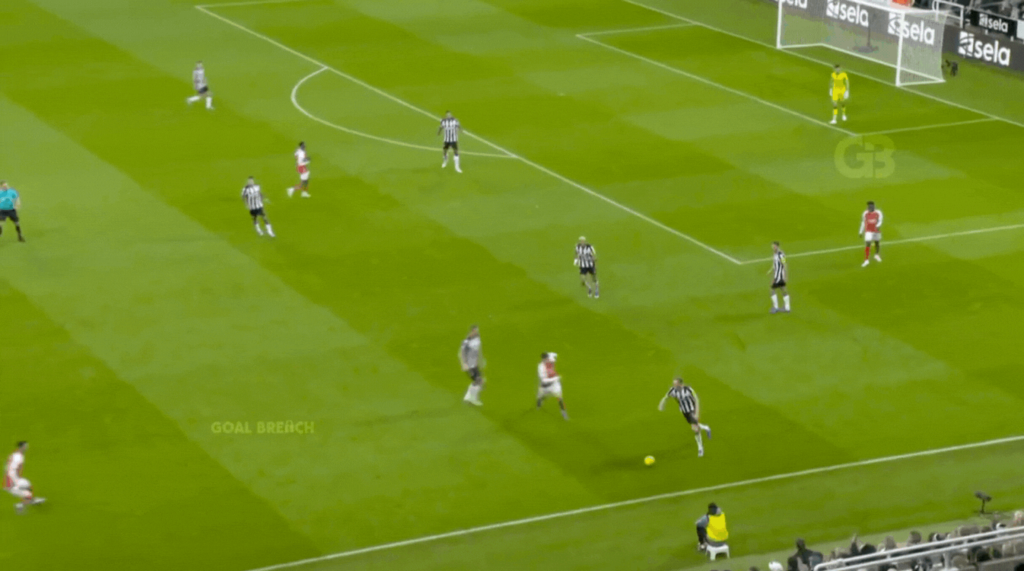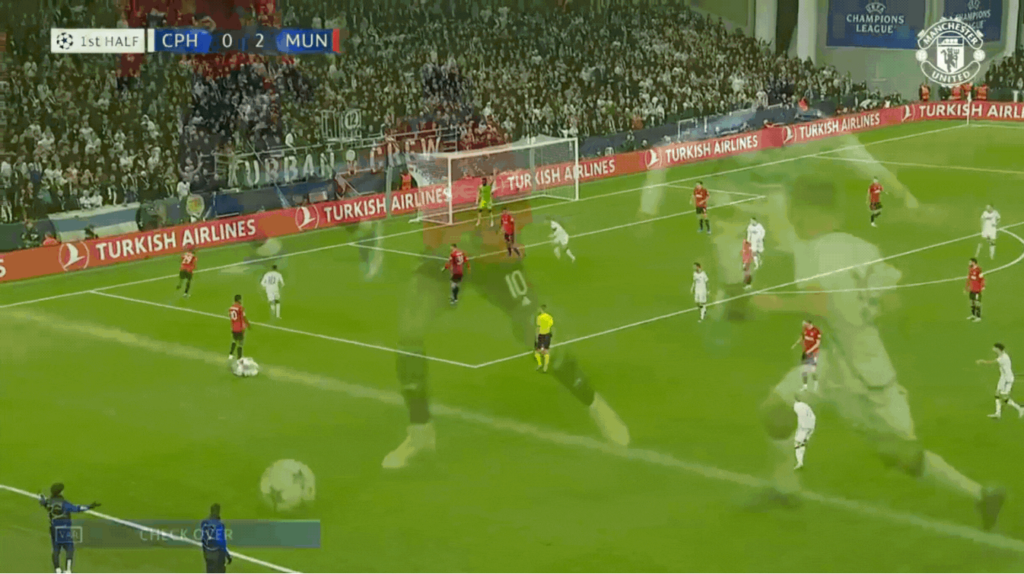With the 2023-24 season now in full swing we have already seen 27 red cards, just 3 shy of the entire total from the last campaign. Given that it’s only mid November it’s got us at Soccer Noise asking, what exactly is the point of red cards these days?
What is the purpose of Red Cards in Football? A red card is a punitive measure available to the referee in a football match. When shown to a player they must leave the field of play immediately and cannot be replaced. Red cards are primarily used to punish or dissuade behavior or play that is undesirable, dangerous or un-sporting. A sending off will almost always be followed by the player being suspended from future matches. A red card can be either given for receiving 2 yellow cards in the same match or if the referee deems it necessary a straight red card.

Starting with the premise that football is better when it’s 11 v 11, as a rule people don’t want players sent off. Red cards should be an exception, not commonplace. Obviously this comes with some caveats.
- ● You don’t want anyone gaining an advantage by deliberately cheating.
- ● You don’t want anyone’s safety unnecessarily endangered.
Football is a game where 22 people all try to kick the same object, which is a ball measuring less than a foot in diameter. There is going to be some accidental contact. There is going to be some controlled deliberate contact. Eliminating risk, does not mean eliminating or punishing all contact.
The FIAB serious foul play rule says:
“A tackle or challenge that endangers the safety of an opponent or uses excessive force or brutality must be sanctioned as serious foul play.

Any player who lunges at an opponent in challenging for the ball from the front, from the side or from behind using one or both legs, with excessive force or endangers the safety of an opponent is guilty of serious foul play.”
Romero was deemed to have committed serious foul play
There is no mention of contact with another player here. So at a base level if a player does something that is considered serious foul play, it should always be serious foul play, regardless of the contact made with an opponent. Remember, red cards should be the exception, not the rule, so the bar for serious foul play should be high.
Looking at recent examples, in the recent matches Romero (Spurs vs Chelsea) and Havertz (Newcastle vs Arsenal) both made challenges where they came off the ground at speed and had little control over their body or momentum. Regardless of the contact made with the opponent or the ball, this should be deemed to have endangered their safety and be considered serious foul play. You could make the same assertion, even if they had made zero contact with the player. Romero was sent off and Havertz challenge was later ruled to have been worthy of a red card by the Premier League’s Key Match Incidents panel. (this just goes to the inconsistency with which the rules are interpreted and applied)

Havertz escaped punishment, but his challenge was later deemed to be serious foul play
We use these two as examples as they are recent, but challenges like this have long been hated by everyone around the game as they can cause serious injury. They fall into the realm of serious foul play by; using excessive force, brutality, lunges, and they endanger the safety of an opponent. These types of challenges should be punished as serious foul play, regardless of contact with another player.
How many red cards have there been in each Premier League season?
We have compiled and analyzed all the red card data from the start of the Premier League in 1992-93 to the most recently completed season 2022-23. There is some noise as the first 2 years saw more total games played in the 22 team Premier League, however they saw a shockingly low amount of red cards compared to proceeding years.
Premier League Season Red Cards
1992-93 33
1993-94 28
1994-95 67
1995-96 54
1996-97 44
1997-98 68
1998-99 72
1999-00 70
2000-01 64
2001-02 71
2002-03 75
2003-04 58
2004-05 60
2005-06 75
2006-07 51
2007-08 59
2008-09 63
2000-10 68
2010-11 65
2011-12 66
2012-13 55
2013-14 53
2014-15 71
2015-16 59
2016-17 41
2017-18 39
2018-19 47
2019-20 44
2020-21 48
2021-22 43
2022-23 30
English Premier League Red Cards by season
There is a clear change in protocol for the 1994-95 season with total red cards issued more than doubling. This was as the Premier League and Sky made a giant push to modernize the on field product for broadcast. Games didn’t suddenly get twice as violent, referee’s were issued guidance to clamp down on rough play and allow the exciting attacking players more opportunity to express themselves. In itself a purpose of the red card in football.
On Average 56 Red Cards have been awarded in each Premier League season. The lowest amount was 28, in the 1993-94 season. The highest was 75 coming in both the 2002-03 and 2005-06 season. If we discount the 3 highest and 3 lowest red card totals the season average barely changes, growing by 1, to 57 red cards. This shows that all in all, the peaks and troughs have balanced themselves out across the 31 Premier League seasons.
The modern trend has been for slightly fewer red cards, the last 10 years (2013-14 to 2022-23) saw an average of just 47 red cards. We mentioned at the start of this blog that red cards for the current 2023-24 season have almost surpassed those for last season. While true, this is a slight misleading statistic. The previous season 2022-23 saw by far the lowest amount of red cards since the early years of the Premier League. Only 30 red cards were issued in total, ranking second behind the 1993-94 season 28 and the 1992-93 seasons 33 red cards. So while this season’s numbers are high, they seem ludicrous compared to the record low of last season.
Once again this can be put down to guidance given to the referee’s and a desire for the games to look and feel better to the viewer. Officials were asked last year to be less harsh on their red cards, in an attempt to keep more games 11 vs 11. This seemed to work well last season and there were no more injuries from rougher challenges or disputes around cheating than in any other season. So why has the guidance so clearly swung the other way? Referee’s are on course to hand out a record 80 red cards this season, 27 have been issued already with just 120 games of a total of 380 games played (32%). So while this would be a huge jump from last season, and in theory a Premier League record, it is likely that the numbers will slightly edge down in the second two thirds of the season and end at a reasonable number, probably in the high 60’s.
What do IFAB rules say about issuing yellow cards for serious foul play?
Is it possible that officials could make a slightly more lenient decision in terms of things that technically fall into serious foul play, but are clearly not worthy of a game changing red card and potential 3 match ban?
When looking at section 12 of the IFAB rules of football that deal with Disciplinary Action it is clearly broken down into yellow card offenses and red card offenses. Serious foul play falls only into the red card offense list. However under the yellow card list there is the following entry;
“commits in a reckless manner a direct free kick offense”
This clearly gives the on-field referee the autonomy to decide between what is a reckless foul worthy of a caution and what is serious foul play. This is further backed up by the below information from the Q&A section at the bottom of the page. It reads;

This clearly empowered the referee to issue a caution for offenses that while potentially falling under serious foul play, do not meet the high bar for a straight red card.
Furthermore, the screenshot below taken from the IFAB’s guidance on the responsibilities of referees covers the impact of VAR on decisions the referee can make. A common question is that if the VAR calls the referee to the monitor to review an incident of potential serious foul play that he did not see live, is the ref beholden to a binary option of either taking no action or sending the player off. IFABs answer is very clearly no and that the on field referee can choose to simply caution the player with a yellow card if that is the option the referee feels is most appropriate.

Is it too easy to get a red card in modern football?
Let us now look at Marcus Rashford’s red card against Copenhagen in the Champions League from Wednesday night. For it to be considered serious foul play and therefore a red card it has to meet the criteria in the rules laid out above.

Did Rashford use excessive force? I’d say no, he never fully left the ground, he was always in control, he simply stepped out wider than his natural body line in order to protect the ball. Something that happens dozens of times in every football match without incident or punishment.
Was it brutal? No. (I don’t think this needs explaining)
Did he lunge with excessive force? No. I think it would be hard to characterize this as a lunge and it certainly didn’t have excessive force or any more force than any player making this kind of ball shielding move would normally apply.
Therefore we are left with only endangering the safety of his opponent.
The end result was that he trod on his opponent’s foot. While this can definitely be considered a foul and probably hurt a bit, it was clearly not intentional. This word is not in the rules, however, it does matter because it informs the decision on whether he endangered the players safety. We can agree he didn’t deliberately endanger his safety then as there was no intent.
So did Rashford accidentally endanger the safety of his opponent. Possibly. However if we are deciding this as fact, would he or any other player not ALWAYS be endangering the safety of an opponent by performing a similar ball shielding move, regardless of contact? Without the context of him treading on his opponent, it’s hard to call what he did reckless. Again, reckless, isn’t a word used in the serious foul play rules. We’ll get to that in a bit.
This may seem like semantics, but it isn’t.
My first point was that football is better 11v11 and red cards should be the exception. They should protect safety and punish and/or prevent cheating. So who is the winner from Rashford being sent off?
Did he look to gain an advantage by cheating? No.
Was his action deliberately designed to hurt the player? No.
Was his action reckless? No.
Did his action endanger the safety of his opponent? Possibly.
The rules wording seem to miss out some key ingredients here. As I highlighted at the start 22 players are trying to kick the same object that is less than 1 foot in diameter. There’s going to be contact.
Was the danger Rashford created deliberate, reckless or unnecessary? Absolutely not.
If the answer to that last bit is yes, then surely everyone who steps outside their body line to protect the ball from an oncoming defender is creating the same situation where an opponent’s safety might be endangered? Are we going to send them all off for serious foul play?
You can only be held responsible for what you are aware of. Someone performing a move like Rashford did to shield the ball would have little awareness that they might stand on an opponent by doing so. Certainly no more so than a goalkeeper leaping into the air to catch or punch a cross, a defender going up for a header with eyes only on the ball or a striker charging the back post looking to score.
All of these situations may well endanger an opponent’s safety, and yet they happen every match without being called serious foul play. The goalkeeper may land on another player, the defender may clash heads with an attacker and the striker may clatter the goal keeper. These are all just football things, there will always be risk of contact and while severity of contact should absolutely be taken into account, the clear intention and fundamental action of the player should be assessed before “serious foul play” can be assigned. “Was what the player did an accepted part of football?” Should absolutely be something that goes through an officials mind when deciding on matters of serious foul play.
Don’t even get me started on Overhead Kicks.
So, what is the purpose of a red card in football? The purpose of a red card in football (for football reasons) should be to deter or punish breaking the rules to give your team an advantage and to deter or punish reckless play that endangers the safety of other players. If the rules set too low a bar for serious foul play, then they need to be changed. 11 v 11 should be the target unless one of the above two criteria is met.
